Imagine stepping into your garden and plucking a sun-warmed apple or a cluster of juicy grapes, all cultivated by your own hands. Growing fruit at home isn’t just an exercise in horticulture; it’s an invitation to savor the freshest produce and embrace a more self-sustained lifestyle. Whether you’re just starting out with a small balcony or you’ve got a sprawling backyard, the journey of nurturing fruit plants is both rewarding and enriching. This article will guide you through the essentials, ensuring that fruit-growing can be a joy for novices and a fulfilling expansion for seasoned gardeners alike.
Embarking on the journey of home fruit cultivation allows you to connect with nature on a deeper level, bringing a slice of tranquility to your daily routine. You’ll discover how to select the right fruit varieties for your climate, prepare your soil, and maintain healthy plants that yield bountiful harvests. For beginners, we’ll demystify the process, starting with easy-to-grow fruits like strawberries and blueberries. Experienced gardeners will find tips on maximizing yields, experimenting with exotic varieties, and troubleshooting common challenges.
In the following sections, you’ll learn how to assess your garden’s sunlight and soil conditions to set your plants up for success. We’ll explore the art of pruning and pest management, ensuring your fruit plants thrive throughout the seasons. Together, we’ll transform your garden into a vibrant, fruitful oasis that not only nourishes the body but also feeds the soul. So, roll up your sleeves, and let’s embark on this fruitful adventure together!
Select Suitable Fruit Varieties
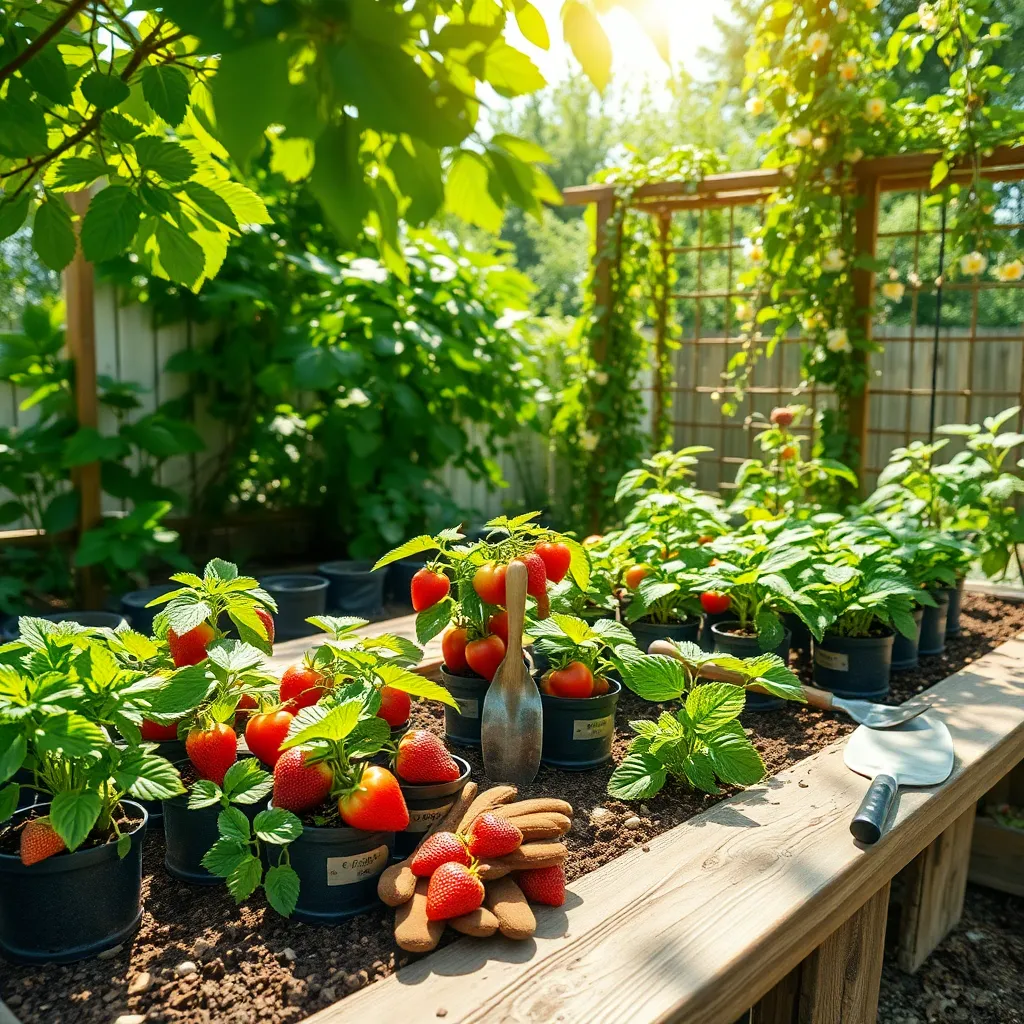
When selecting fruit varieties for your garden, it’s important to consider your local climate and soil conditions. Choose varieties that are hardy and well-suited to your region to ensure they thrive and produce abundant fruit.
Beginners might want to start with easier-to-grow fruits like strawberries, blueberries, or raspberries. These fruits generally require well-draining soil and full sun exposure, making them a great choice for most gardens.
For those with a bit more experience, consider planting fruit trees such as apple, pear, or cherry. These trees often require regular pruning and specific fertilization schedules to maintain healthy growth and fruit production.
It’s also beneficial to consider disease-resistant varieties to reduce the need for chemical treatments. Look for labels or descriptions that mention resistance to common issues like powdery mildew or rust to save yourself future headaches.
Once you’ve selected your plants, proper spacing is crucial to ensure they have room to grow and access to nutrients. Follow guidelines specific to each plant type, as overcrowding can lead to reduced yields and increased pest problems.
For advanced gardeners, experimenting with grafting can expand your fruit variety options without needing additional space. Grafting allows you to grow multiple fruit types on a single tree, maximizing your garden’s productivity and diversity.
Prepare an Optimal Growing Space
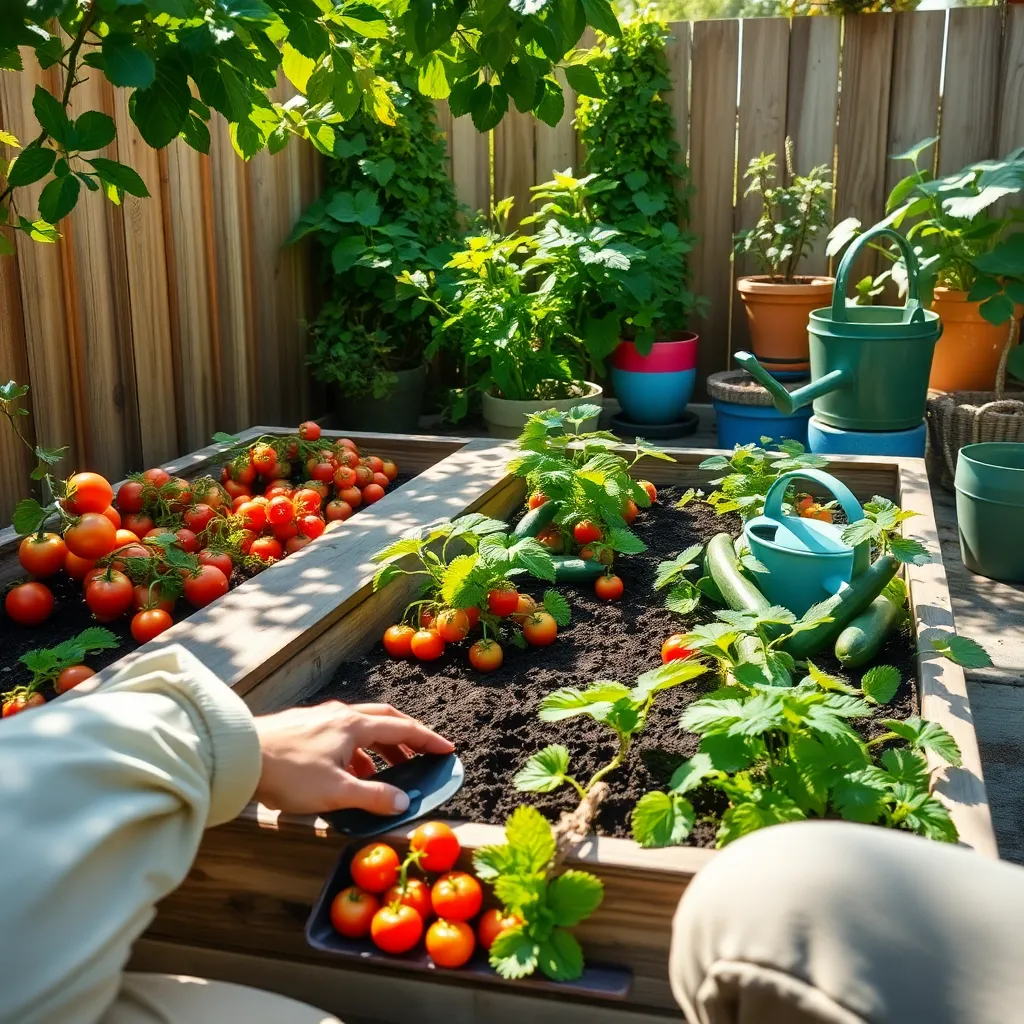
Creating an optimal growing space for your fruit plants is crucial for their success. Begin by choosing a location that receives at least six to eight hours of sunlight daily, as most fruit plants thrive in full sun.
Ensure your soil is well-drained and rich in organic matter to support healthy root development. You can improve soil quality by incorporating compost or well-rotted manure, which helps retain moisture and nutrients.
For beginners, a raised bed can be an excellent option, offering better control over soil quality and drainage. If you’re more experienced, consider employing a no-dig method to preserve soil structure and increase biodiversity.
Irrigation is another important consideration, as consistent moisture is essential for fruit development. Install a drip irrigation system to ensure even watering, which can save time and reduce water wastage.
Plant Seeds or Young Saplings
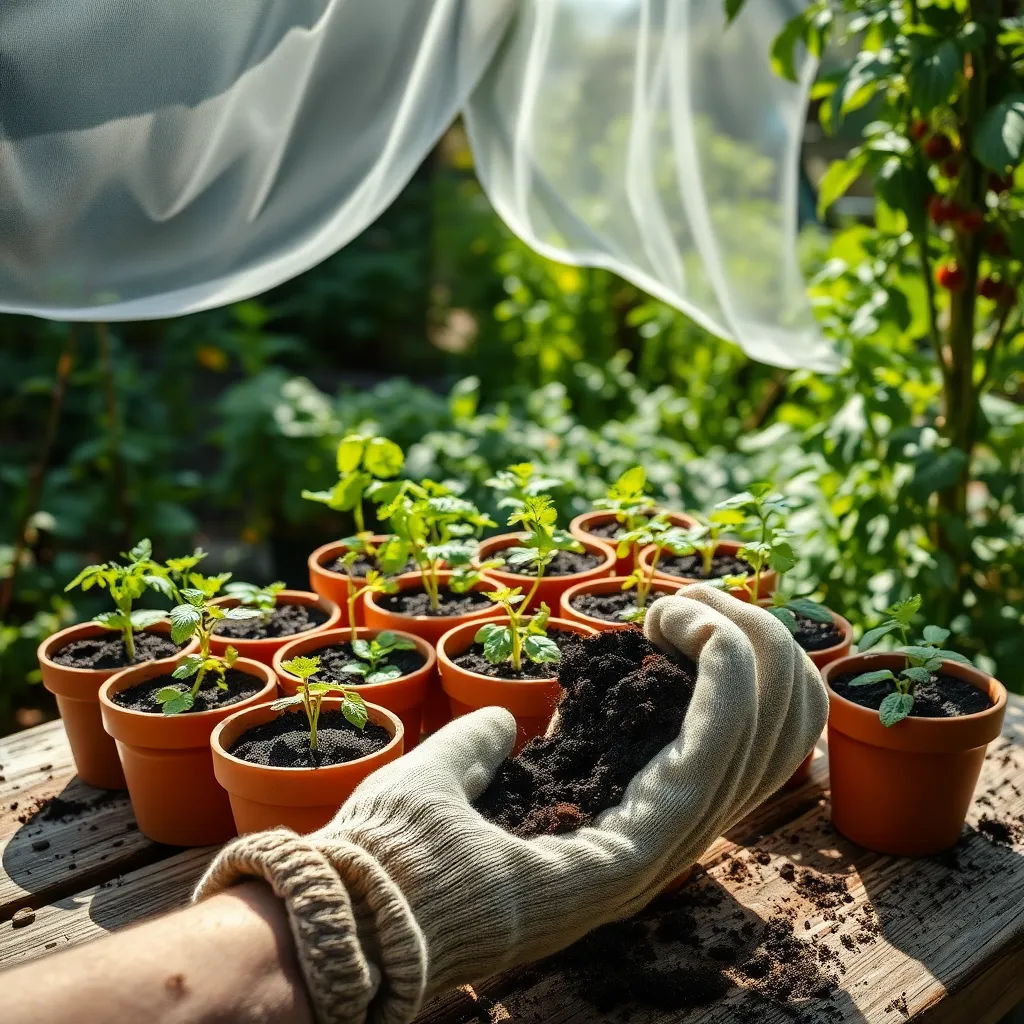
Deciding between planting seeds or young saplings depends on your gardening goals and patience level. Seeds are cost-effective and offer the satisfaction of nurturing a plant from its earliest stage, while saplings provide a head start and can be less susceptible to early growth challenges.
If you choose seeds, ensure you purchase high-quality ones from a reputable supplier to increase germination success. Follow the seed packet instructions closely, as they provide specific guidelines on planting depth and spacing that are crucial for healthy growth.
For those opting to plant saplings, start by selecting varieties that are well-suited to your climate and soil type. It’s important to plant saplings at the same depth they were growing in their nursery pots to avoid stressing the roots and impeding growth.
Watering is critical at both the seedling and sapling stages, but over-watering can be detrimental. Aim to keep the soil consistently moist but not waterlogged, and consider adding a layer of mulch to help retain moisture and control weeds.
Ensure Consistent Watering Schedule
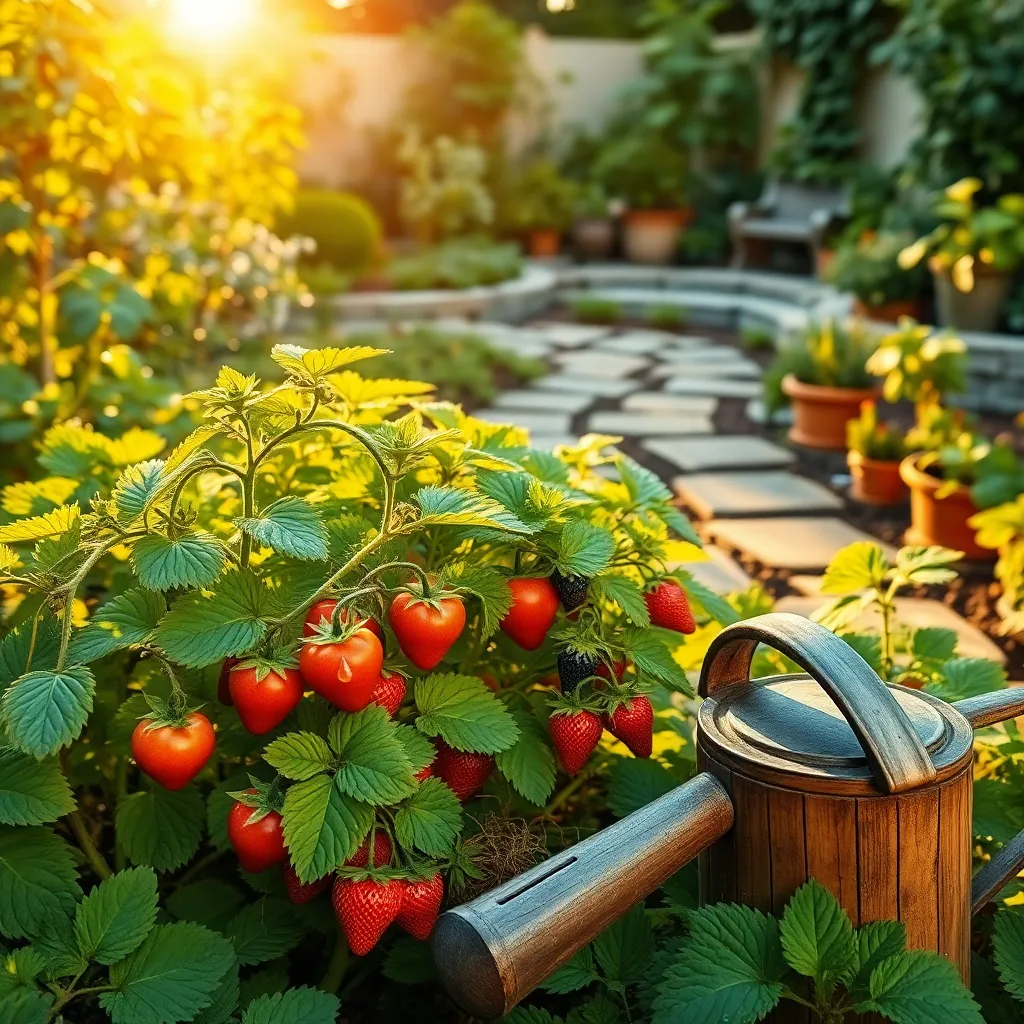
Once your seeds or saplings are in the ground, establishing a consistent watering schedule is crucial for healthy growth. Watering practices can make or break your fruit-growing success, so understanding your plants’ needs is essential.
Begin by assessing your local climate and soil type, as these factors dictate watering frequency. Loamy soil, which retains moisture well, might require less frequent watering compared to sandy soil.
For beginners, a general rule is to water your fruit plants deeply once or twice a week. This encourages deep root growth, which enhances the plant’s drought resistance and overall vigor.
More advanced gardeners can benefit from installing a drip irrigation system, which delivers water directly to the roots, reducing evaporation and water waste. This method is particularly useful for fruit trees and larger garden setups.
Always water early in the morning or late in the afternoon to minimize evaporation and maximize water absorption. Avoid watering from overhead to prevent diseases that thrive in moist foliage.
Regularly check the moisture level of your soil by sticking your finger an inch into the ground. If it feels dry at this depth, it’s time to water.
Monitor Growth and Control Pests
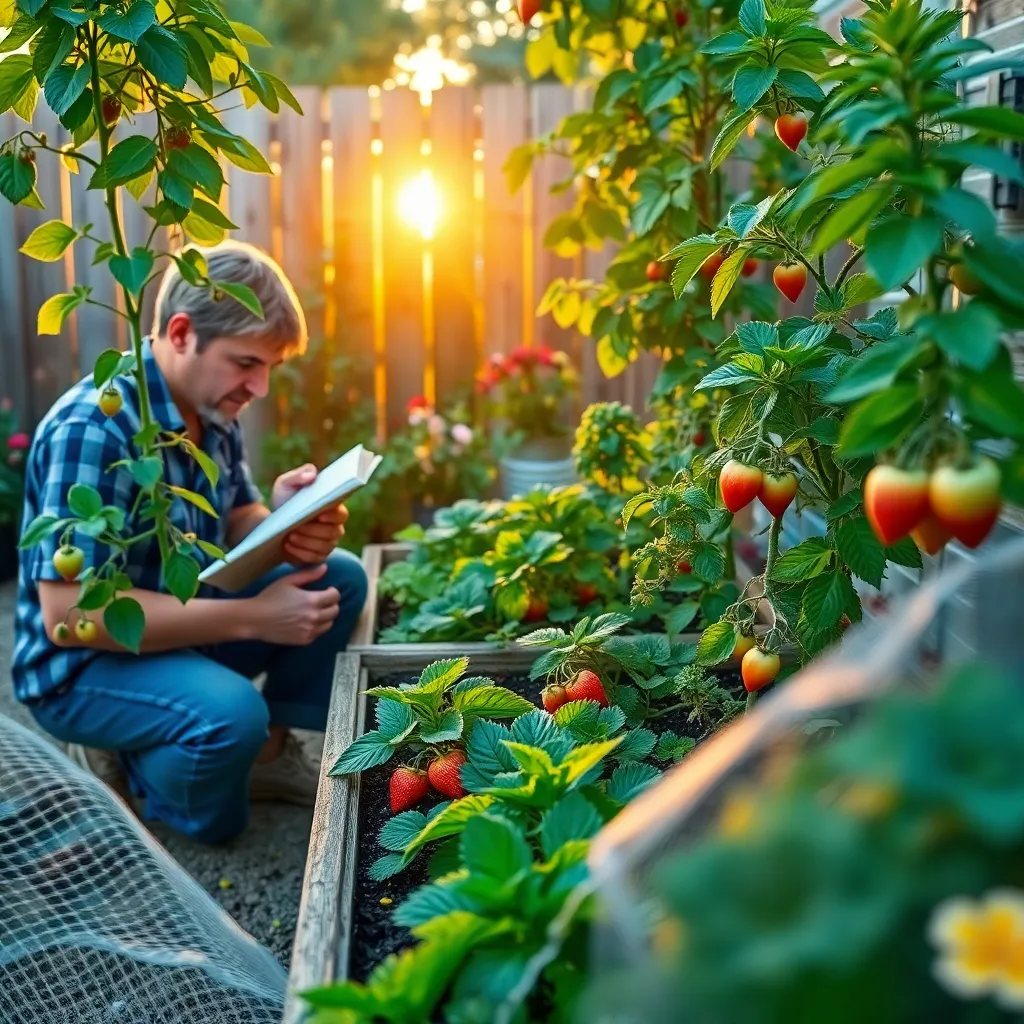
Monitoring the growth of your fruit plants is essential to ensuring they reach their full potential. Regularly check for signs of new growth and adapt your care routine as needed to support their development.
Observe the color and size of leaves, as they can be indicators of the plant’s health. If leaves are yellowing or smaller than usual, it might be a sign of nutrient deficiency, which can be remedied by adding a balanced fertilizer.
Pests can quickly become a problem if not managed promptly. Regularly inspect your plants for common pests like aphids, spider mites, and caterpillars, which can damage leaves and fruit.
To control pests naturally, consider introducing beneficial insects like ladybugs or applying neem oil as a deterrent. For a more advanced approach, setting up companion plants such as marigolds can help repel harmful insects.
When dealing with more persistent pests, you may need to use organic insecticidal soap. Always follow the manufacturer’s instructions and apply it during the cooler parts of the day to prevent plant stress.
By staying vigilant and addressing issues promptly, you’ll create a healthier growing environment. This proactive approach will not only help your plants thrive but also make your homegrown fruit even more rewarding.
Conclusion: Growing Success with These Plants
In nurturing your own home-grown fruit, you’ve embarked on a journey that mirrors the nurturing of healthy relationships. We’ve explored the importance of patience, the dedication required to cultivate growth, the necessity of providing the right environment, the value of consistent care, and the joy of reaping the rewards together. Just as a garden flourishes with attentive care, so do our relationships when we invest time and effort into them.
As your immediate next step, choose one relationship in your life that could benefit from a little extra attention this week. Whether it’s a heartfelt conversation or simply spending quality time together, make a conscious effort to nurture it, just like you would your growing fruit.
We encourage you to save or bookmark this article as a valuable guide to revisit. As you continue to grow both your garden and your relationships, remember that success lies in the small, consistent actions you take every day. With commitment and care, you can cultivate relationships that are as fruitful and rewarding as the sweetest harvest. So, dig deep, tend to your connections, and watch them thrive.
